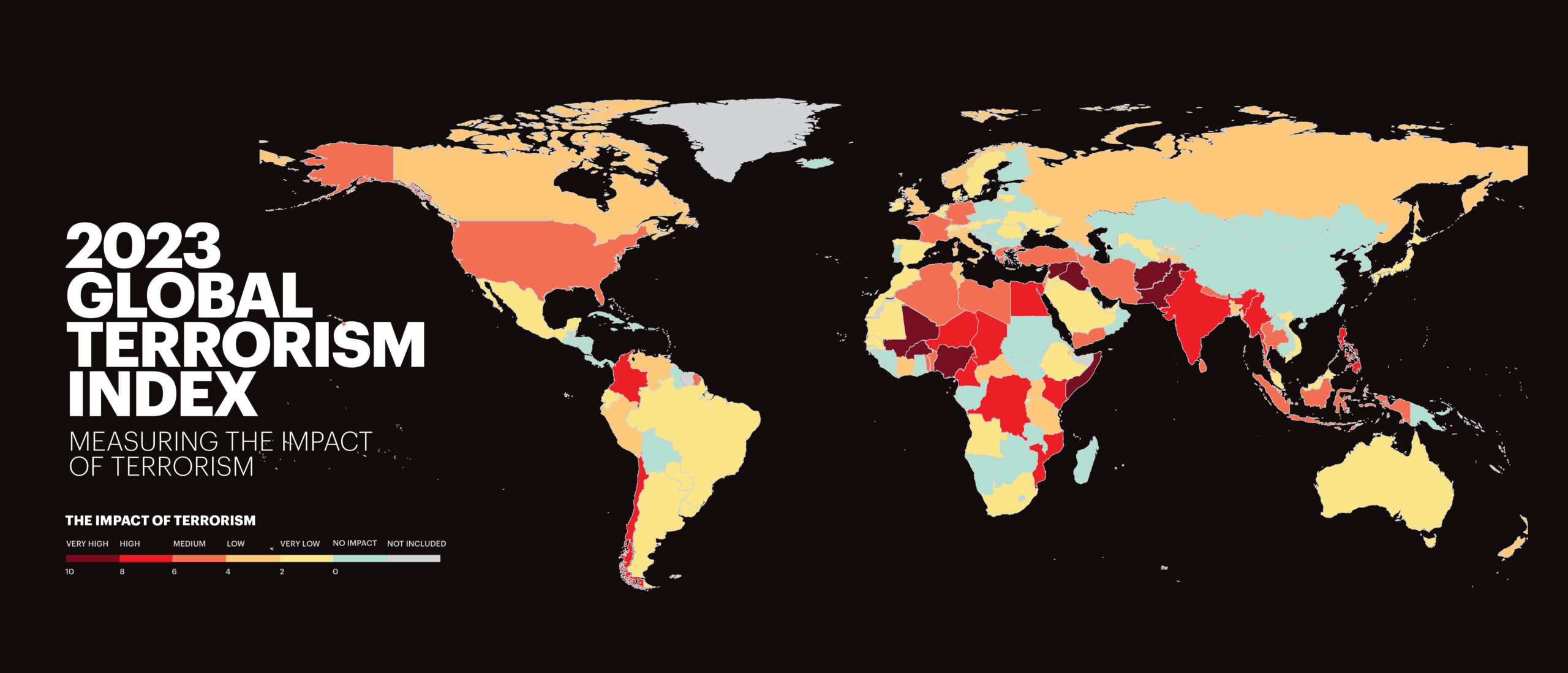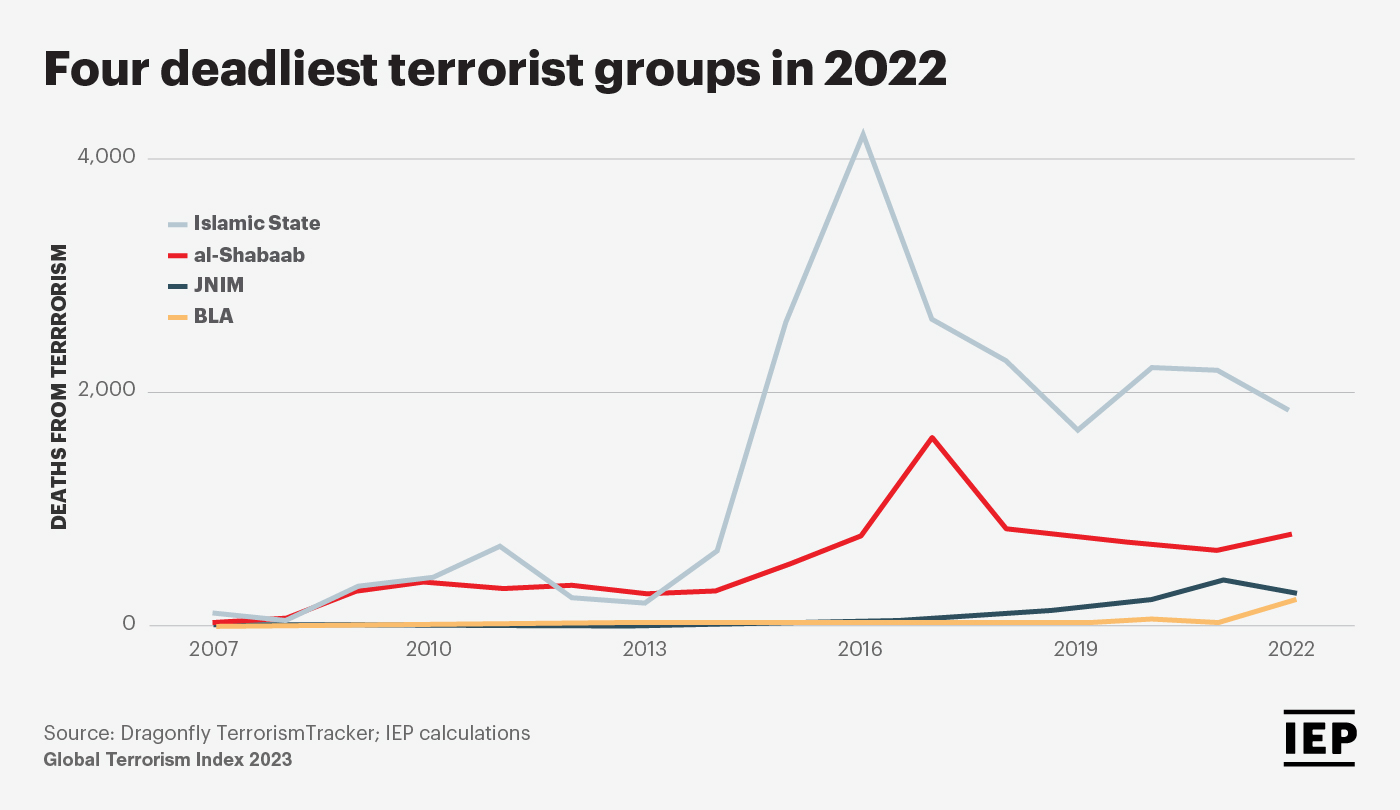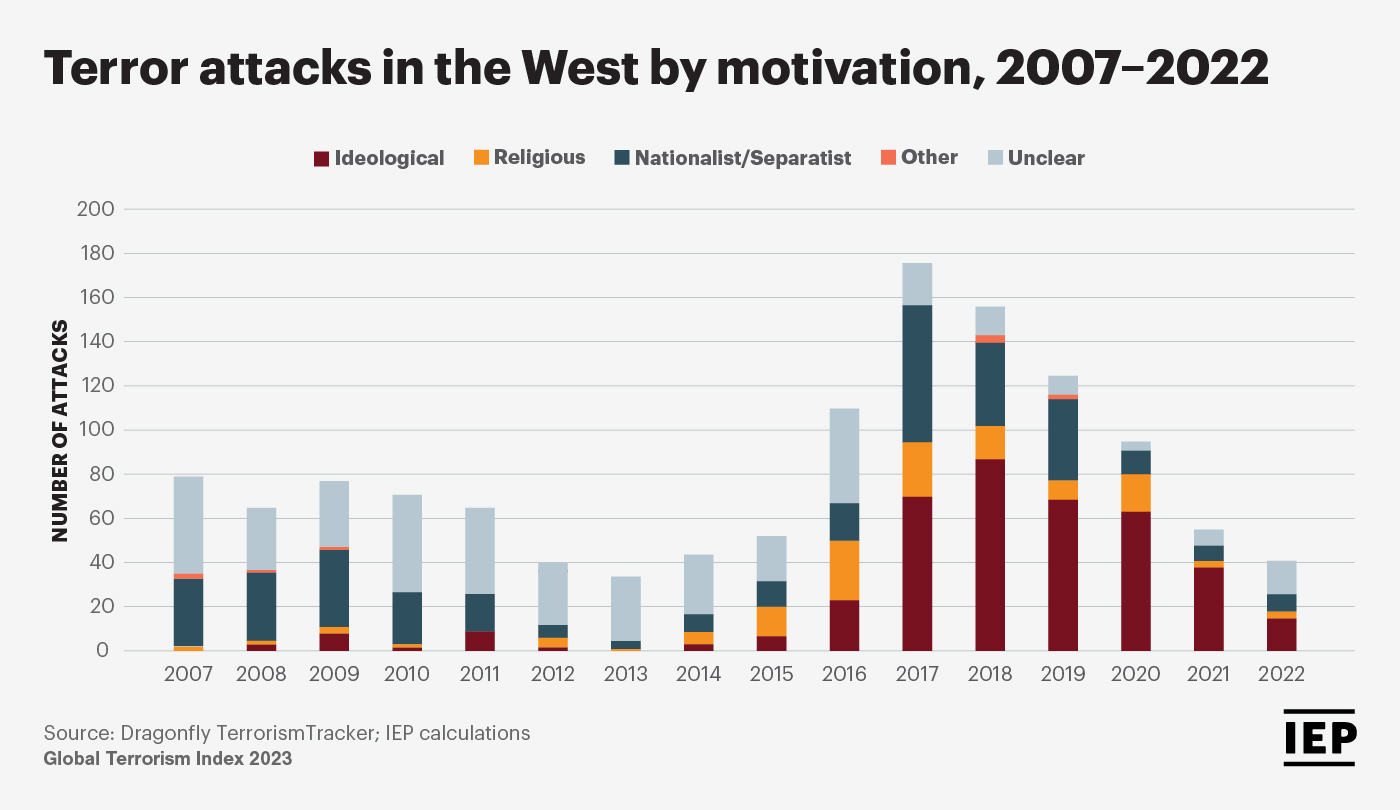The Global Terrorism Index 2023 report provides a comprehensive summary of the key global trends and patterns in terrorism over the last decade. The annual Global Terrorism Index, now in its tenth year, is developed by leading international think tank the Institute of Economics and Peace (IEP) and provides the most comprehensive resource on global terrorism trends.

Here are some of the key findings from the Global Terrorism Index 2023 in five charts.
The tenth annual edition of the Global Terrorism Index (GTI) reveals attacks are more deadly with 26% more people dying in each incident – the first rise in lethality in five years. After substantial improvements in terrorism activity between 2016 and 2019, progress has plateaued with both attacks and deaths remaining roughly the same since 2019. The number of countries recording a death ranged from 43 in 2020 to 42 in 2022.
Last year, terrorism resulted in 6,701 deaths, 38% lower than at their peak in 2015. However, the lethality rate of the two deadliest terrorist groups is increasing. IS, the deadliest, saw an increase of 12% to 2.9 deaths per attack, while al-Shabaab’s lethality rate is at its highest level since 2017, increasing by 32% to 2.5 persons per attack. This highlights that the effectiveness of these two groups is rising.
The next two deadliest terrorist groups were Balochistan Liberation Army (BLA) and Jamaat Nusrat Al-Islam wal Muslimeen (JNIM). IS remained the deadliest terrorist group for the eighth consecutive year, while the BLA, operating in Pakistan, is now the fastest growing terrorist group in the world, with terrorism deaths increasing nine times to 233 deaths in 2022.

Of the 830 million people facing food insecurity globally, 58 percent live in the 20 countries most affected by terrorism. Six of the ten countries most impacted by terrorism are also among the 25 countries with the worst ecological threats and lowest resilience in 2022’s Ecological Threat Report, highlighting the interdependency between ecological degradation and conflict.

In the West, the number of attacks continues to fall, with successive falls each year since 2017. Forty attacks were recorded in 2022, a decrease of 27% when compared to the 55 attacks in 2021. However, the number of deaths more than doubled, rising from a low base of nine in 2021 to 19 in 2022.
Ten of the deaths were caused by one attack in the US when a gunman killed civilians at a supermarket in Buffalo, New York. This is the first increase in deaths in the West since 2019. Ideologically motivated terrorism, meaning those related to political extremism, continues to be the most common type of terrorism in the West, with religiously motivated terrorism declining by 89% since the peak in 2016.

The hub of terrorism is rapidly changing and moving towards countries facing political instability, conflict, and ecological degradation, particularly in the Sahel. Deaths from terrorism in the Sahel increased by 7% and are now higher than South Asia and MENA combined. The area is also the most impacted region in the world, representing 43% of deaths from terrorism globally. The region also faces some of the worst ecological degradation, which is amplified by climate change.

Further Reading: Terrorist attacks more deadly, despite decline in the West
Download the Global Terrorism Index 2023 report here.
View the Global Terrorism Index Maps and investigate the data.